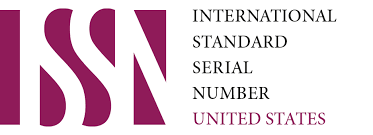The Effectiveness of Distance Learning in the Education System in Uzbekistan
DOI:
https://doi.org/10.62480/jpip.2024.vol34.pp1-4Keywords:
distance learning, remote education, automated control systemAbstract
In today's world of information technology, distance learning is becoming increasingly important. Because this type of education differs from the existing types of education in some of its positive aspects, the difference between distance learning and full-time and other types of education is that this type of education is very popular with the general population. In this article, there is elucidated the effectiveness of distance learning in the education system of Uzbekistan
References
Parpiyev, A. Marakhimov, R. Hamdamov”Electronic University”. Distance Learning Technologies UzME State Scientific Publishing House.2019
Tsoy Margarita et al “Creation of electronic textbooks” tutorial. Tashkent, “National Encyclopedia of Uzbekistan”, 2007.
Harmoniously developed generation is the basis of development of Uzbekistan. // Laws of the Republic of Uzbekistan "On Education" and "On the National Training Program". -T.: «Sharq», 1998. -64 p.
Aripov M.M., Muhammadiev J.O’. Informatics, information technologies // Textbook for higher education institutions. –T.: TDYI, 2004. –B. 275.
Turakulov H. A., Fayzimatov B. N., Ubaydullaev S., Turakulov O. H., Hamidov J. A. Textbook "Scientific and pedagogical bases of application of new pedagogical technologies in teaching technical sciences". - Fergana. "Technique". 2003.
Taylaqov N. I., Mallaev Z. Development of educational literature based on information technology for vocational education. Proceedings of the Republican scientific-practical conference "Problems of vocational education". Samarkand, 2018.
Downloads
Published
Issue
Section
License

This work is licensed under a Creative Commons Attribution-NonCommercial 4.0 International License.
User Rights
Under the Creative Commons Attribution-NonCommercial 4.0 International (CC-BY-NC), the author (s) and users are free to share (copy, distribute and transmit the contribution).
Rights of Authors
Authors retain the following rights:
1. Copyright and other proprietary rights relating to the article, such as patent rights,
2. the right to use the substance of the article in future works, including lectures and books,
3. the right to reproduce the article for own purposes, provided the copies are not offered for sale,
4. the right to self-archive the article.












